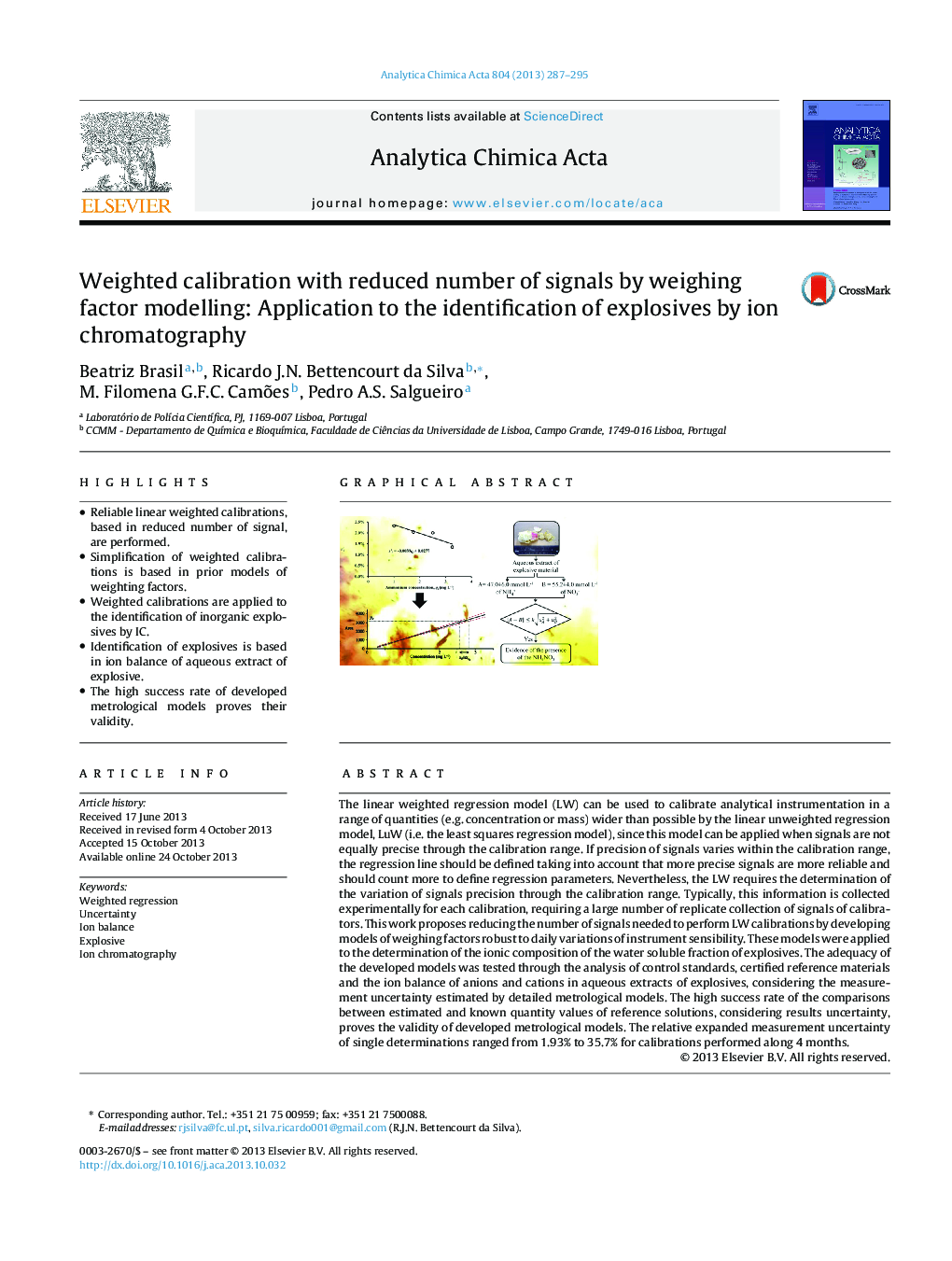| Article ID | Journal | Published Year | Pages | File Type |
|---|---|---|---|---|
| 1165255 | Analytica Chimica Acta | 2013 | 9 Pages |
•Reliable linear weighted calibrations, based in reduced number of signal, are performed.•Simplification of weighted calibrations is based in prior models of weighting factors.•Weighted calibrations are applied to the identification of inorganic explosives by IC.•Identification of explosives is based in ion balance of aqueous extract of explosive.•The high success rate of developed metrological models proves their validity.
The linear weighted regression model (LW) can be used to calibrate analytical instrumentation in a range of quantities (e.g. concentration or mass) wider than possible by the linear unweighted regression model, LuW (i.e. the least squares regression model), since this model can be applied when signals are not equally precise through the calibration range. If precision of signals varies within the calibration range, the regression line should be defined taking into account that more precise signals are more reliable and should count more to define regression parameters. Nevertheless, the LW requires the determination of the variation of signals precision through the calibration range. Typically, this information is collected experimentally for each calibration, requiring a large number of replicate collection of signals of calibrators. This work proposes reducing the number of signals needed to perform LW calibrations by developing models of weighing factors robust to daily variations of instrument sensibility. These models were applied to the determination of the ionic composition of the water soluble fraction of explosives. The adequacy of the developed models was tested through the analysis of control standards, certified reference materials and the ion balance of anions and cations in aqueous extracts of explosives, considering the measurement uncertainty estimated by detailed metrological models. The high success rate of the comparisons between estimated and known quantity values of reference solutions, considering results uncertainty, proves the validity of developed metrological models. The relative expanded measurement uncertainty of single determinations ranged from 1.93% to 35.7% for calibrations performed along 4 months.
Graphical abstractFigure optionsDownload full-size imageDownload as PowerPoint slide
